|
Virgin and Child, Enthroned, The Master of Moulins, 1499 |
|
|
|
Virgin and Child, Enthroned, The Master of Moulins, 1499 |
|
|
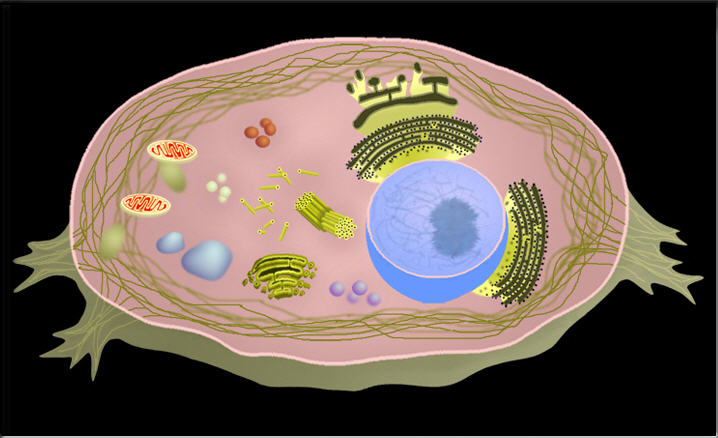 |
 |
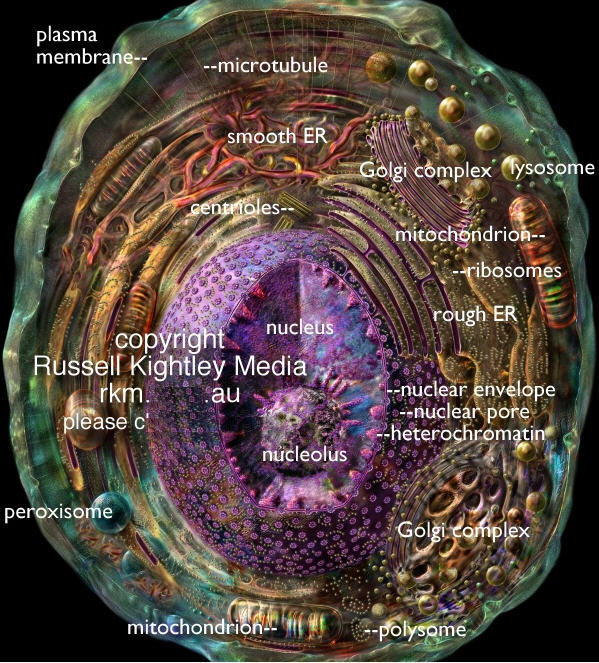 |
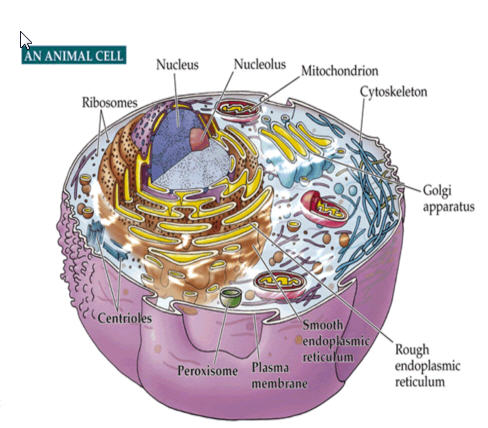 |
 |
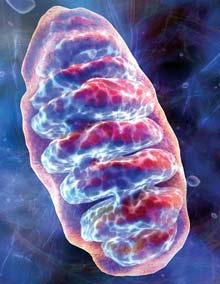 |
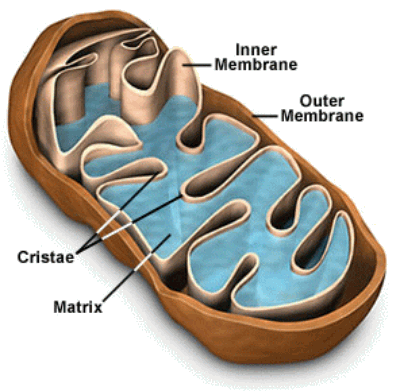 |
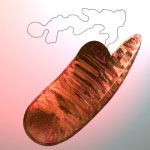 |
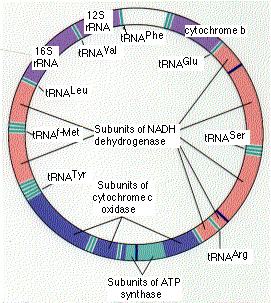 |
Mitochondrial DNA (mtDNA)
The human mitochondrion contains 5–10
identical, circular molecules of DNA. Each consists of 16,569 base pairs
carrying the information for 37 genes which encode:
2 different molecules of ribosomal RNA
(rRNA)
22 different molecules of transfer RNA (tRNA) (at least one for each amino acid)
13 polypeptides
The rRNA and tRNA molecules are used in the machinery that synthesizes the 13
polypeptides.
The 13 polypeptides participate in
building several protein complexes embedded in the inner mitochondrial membrane.
7 subunits that make up the mitochondrial NADH dehydrogenase
3 subunits of cytochrome c oxidase
2 subunits of ATP synthase
cytochrome b
Each of these protein complexes also requires subunits that are encoded by
nuclear genes, synthesized in the cytosol, and imported from the cytosol into
the mitochondrion. Nuclear genes also encode ~900 other proteins that must be
imported into the mitochondrion. [More]
Mutations in mtDNA cause human
diseases.
A number of human diseases are caused by mutations in genes in our mitochondria:
cytochrome b
12S rRNA
ATP synthase
subunits of NADH dehydrogenase
several tRNA genes
Although many different organs may be affected, disorders of the muscles and
brain are the most common. Perhaps this reflects the great demand for energy of
both these organs. (Although representing only ~2% of our body weight, the brain
consumes ~20% of the energy produced when we are at rest.)
Some of these disorders are inherited
in the germline. In every case, the mutant gene is received from the mother
because none of the mitochondria in sperm survives in the fertilized egg. Other
disorders are somatic; that is, the mutation occurs in the somatic tissues of
the individual.
Example: exercise intolerance
A number of humans who suffer from easily-fatigued muscles turn out to have a
mutations in their cytochrome b gene. Curiously, only the mitochondria in their
muscles have the mutation; the mtDNA of their other tissues is normal.
Presumably, very early in their embryonic development, a mutation occurred in a
cytochrome b gene in the mitochondrion of a cell destined to produce their
muscles.
The severity of mitochondrial diseases
varies greatly. The reason for this is probably the extensive mixing of mutant
DNA and normal DNA in the mitochondria as they fuse with one another. A mixture
of both is called heteroplasmy. The higher the ratio of mutant to normal, the
greater the severity of the disease. In fact by chance alone, cells can on
occasion end up with all their mitochondria carrying all-mutant genomes — a
condition called homoplasmy (a phenomenon resembling genetic drift).
Why do mitochondria have their own
genome?
Many of the features of the mitochondrial genetic system resemble those found in
bacteria. This has strengthened the theory that mitochondria are the
evolutionary descendants of a bacterium that established an endosymbiotic
relationship with the ancestors of eukaryotic cells early in the history of life
on earth. However, many of the genes needed for mitochondrial function have
since moved to the nuclear genome.
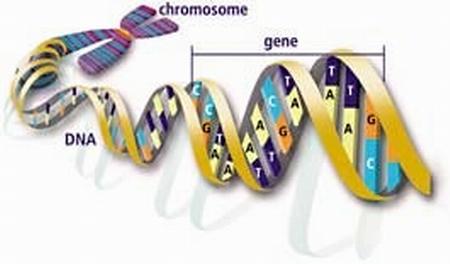 |
|
|
|
|
A sperm cell is one of the most specialised cells in the animal body. They arise by repeated mitosis followed by meiosis to produce haploid immature sperm cells, each with a different genotype (if the process was meiosis followed by mitosis all the cells would have the same genotype). This is spermatogenesis. The sperm mature in the epidydimis, but they do not become fully mature until they reach the female oviduct. They have three separate regions. The Head. This has two important features. The acrosome contains lytic enzymes which are released when the sperm reaches an ovum. These enzymes digest the outer membrane of the egg, allowing penetration of the sperm. The head also contains a single set of chromosomes derived from the male. This will include either an 'X' or 'Y' chromosome, because of the way the XY separate during meiosis. The Middle Section. This part, immediately behind the head, contains numerous mitochondria. These respire sugars in the semen to generate ATP in order to provide the energy for movement of the tail. The Tail. This contains microfilaments running the length of the tail (arranged in the usual 9 + 2 system seen in Eukaryotic organisms). Rhythmic contraction of the filaments causes the tail to wave and move against the fluid environment, providing forward motion. |
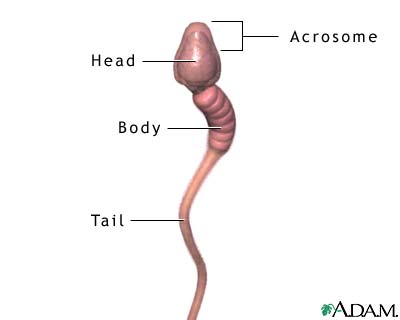 |
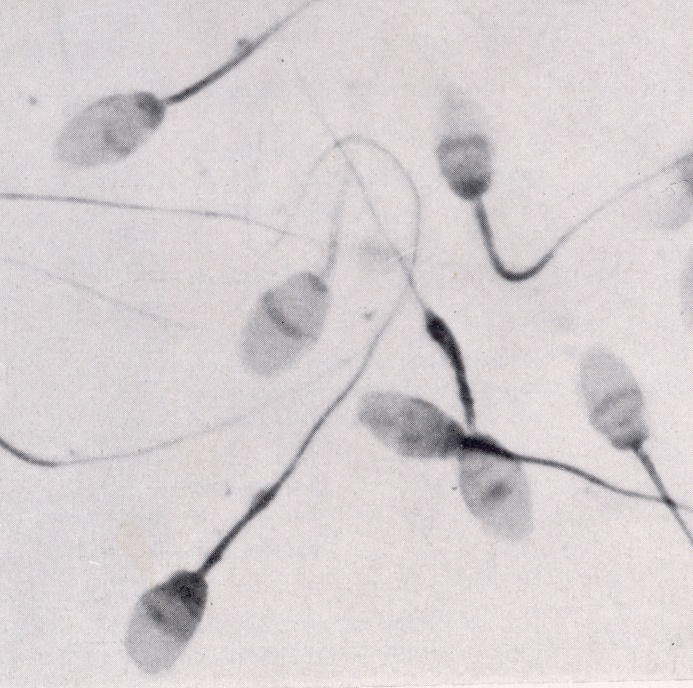 |